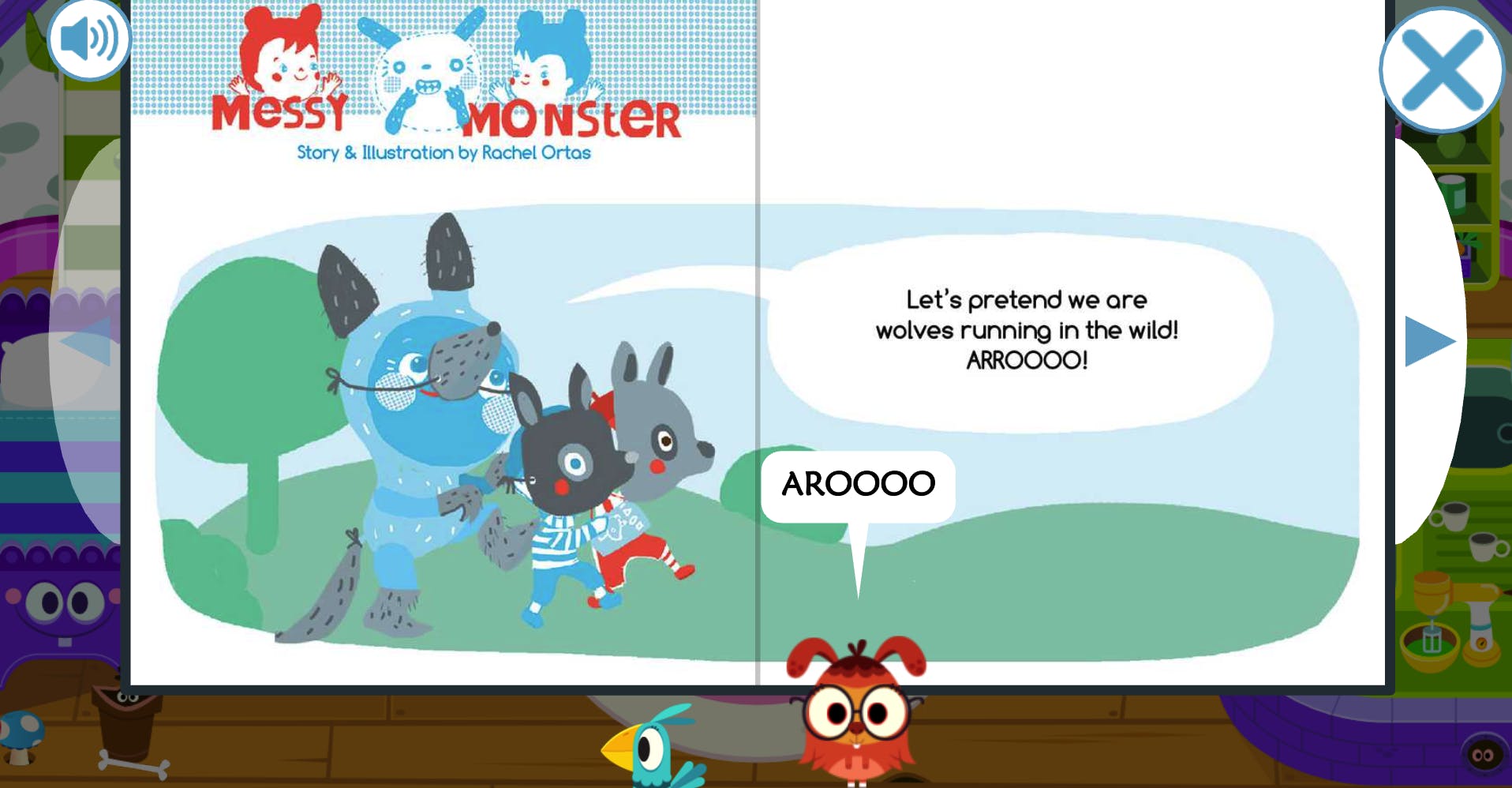Mathematics can be a daunting subject for many. Skipping over the fundamentals as a child can mean a lifetime of struggles in this area, which is why it’s so important to build a solid base as early on as possible. Here, we list the best quality math-focused apps for early years learners. on Apple, Android, Amazon and web.
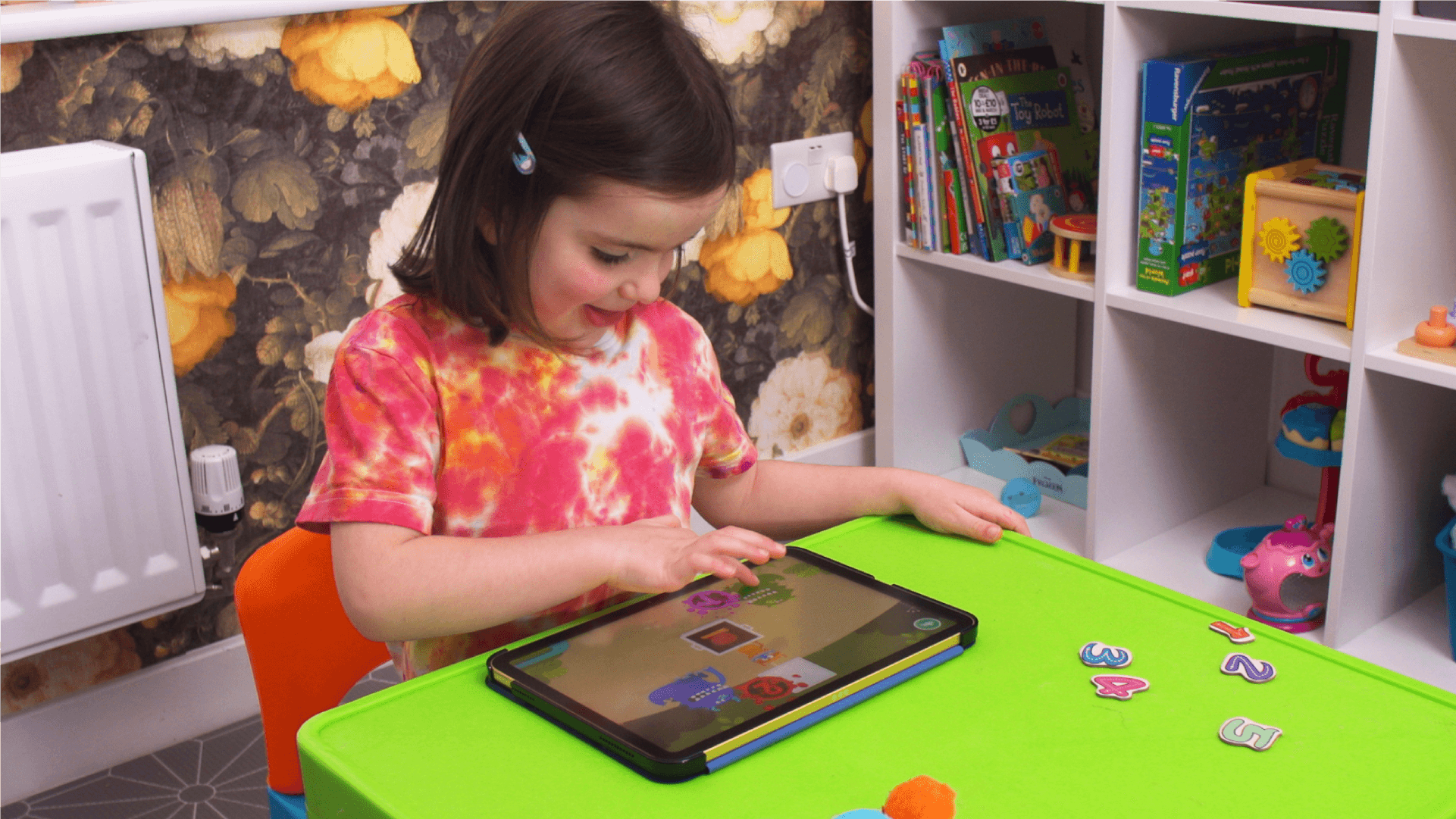
Designed in collaboration with experts in early years mathematics, this fun-filled game offers an exciting new way to practice numbers, using the unique Singapore Mathematics method.
Aligned with the Pre-K/Reception curriculum, Teach Your Monster Number Skills has 40 fun-filled levels designed to build a strong foundation in mathematics, and covers areas such as number bonds, subtraction, addition, counting and much more. A dashboard is also available for both parents and teachers to track progress.
Downside: It currently only features numbers up to ten, with numbers up to 20 coming very soon!
Price: Free trial on iOS, Android, and Amazon. Free to play on PC and Mac
Designed for Reception-aged children, the award-winning Math Makers teaches kids a range of topics, including multiplication, division, fractions and counting, all through fun physics-focused games featuring hilarious, wacky characters. Kids will solve puzzles and carry out exciting challenges to achieve their goals.
Downside: A large number of puzzles require abstract thinking and logical reasoning and offer little to no help in solving them, which can cause frustration.
Price: Free on iOS and Android, includes in-app purchases.
This is a great games-based numbers platform for home learning, to accompany children throughout their early mathematical education and is designed by experienced teachers, gamers and parents. There are over 150 mathematics lessons to practice, with a fully developed comprehensive curriculum that has been designed to mirror school Standards.
Downside: Because this game caters to a large range of abilities, it may not be suitable for everybody within its target demographic.
Price: £2.49. Available on iOS and Android
This official Sesame Street app features Elmo teaching reception-aged children number identification, subitising, number tracing and more. There is tons to explore with songs and videos, coloring pages and games - all focused around numbers 1-20. Plus, parents can track and see what their kids are learning.
Downside: Reviews claim that the image of Elmo only features in the introduction, with the remainder of the game only playing his voice, so kids might be disappointed!
Price: £4.49. Available on iOS and Android
All the essentials of mathematics are covered in this game, including counting, addition and subtraction, place value and writing numbers. Quick Math Jr learns as kids play, adjusting the difficulty of the questions to make sure each individual player is always at a level that is just right for them. The game features a total of twelve games, all aligned with international maths curricula, including US Common Core and the Australian National Curriculum.
Downside: Pricey, at a cost of £7.99
Price: £7.99. Available on iOS
Available in English, Spanish, French, Portuguese and Russian, Drive About Numbers allows preschoolers to “drive”, “fly”, or “sail” around Number Neighbourhood, visiting familiar destinations while learning basic math skills and fine motor skills along the way, through verbal instruction.
This Parents’ Choice award-winning game created by educational game designers encourages free play, allowing kids to practice early numeracy at their own pace.
Downside: There is no clear ending to each game and no reward system upon completion.
Price: £2.49. Available on iOS
Designed to be used both at home and in the classroom, 1-Minute Maths helps pupils build greater number confidence and fluency, with targeted practice in engaging, one-minute chunks. After choosing a topic, users answer a series of randomly generated questions and when the one minute’s up, the questions are automatically marked and presented on a breakdown screen, giving instant feedback on how they’ve done. There are a total of 41 topics with hints available when needed.
Downside: Visually, some may find this game isn’t as exciting as others on offer
Price: Free on iOS, Android, and Amazon
An immersive game with a massive 4000+ library of content to practice, covering over 400 curriculum-aligned maths areas. There are personalised daily learning plans, exciting rewards and narrative-driven games to keep early years learning fun. A real-time progress dashboard offers easy tracking for both parents and teachers.
Downside: Some of the games may feel a little too challenging
Price: Free on iOS, Android and web. Includes in-app purchases
This inclusive and accessible maths app has reached #1 in the Apple App Store in over 20 countries. It covers all the fundamentals of early maths education, including multiplication, subtraction, counting and number concepts. Clocks and calendars also assist children in learning how to tell the time and the days of the week.
Downside: The drag-and-drop and write-in-your-answer options might be tricky to manoeuvre, and some trace numbers, if not written clearly, will not be recognised.
Price: Free to try on Android and iOS, then a range of subscription prices
Finding good quality apps or games to help your Reception or Pre-K aged child learn to read is hard - there are just so many. Here, we list the best apps for early years learners to get them started on their reading journey.
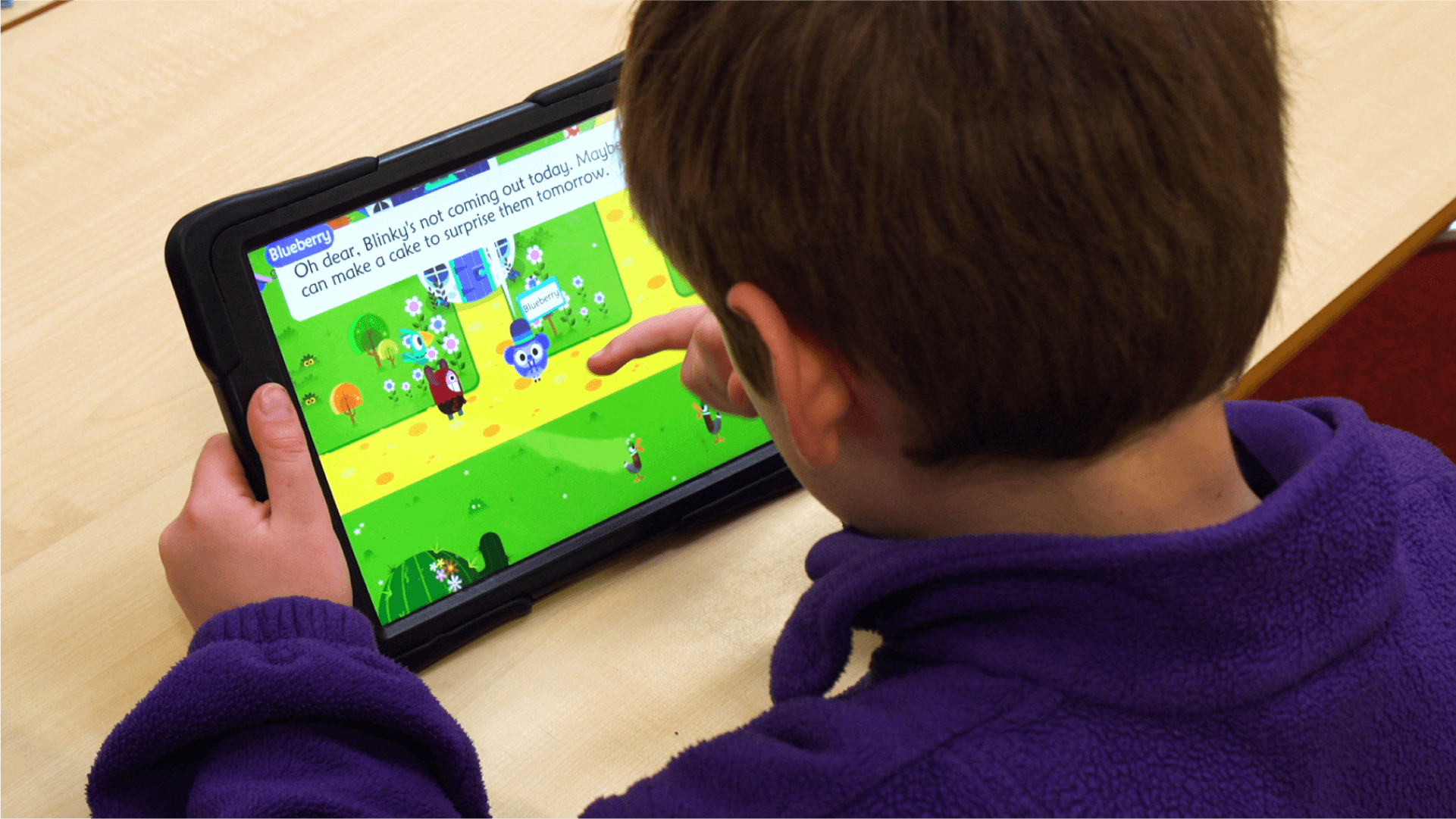
This app, created by non-profit Teach Your Monster - who are part of the Usborne Foundation - is both designed in collaboration with leading academics and aligned with school curriculums. It is suitable for both home learning and in the classroom, complementing all synthetic phonics programmes. Children create a custom monster and take it on its own reading adventure, meeting other fun characters and winning exciting prizes. The game covers everything from letters and sounds, to reading full sentences, and even offers a tracking tool for parents and teachers to see how learning has progressed.
Downside: Some may find games a little repetitive.
Price: £4.99 on iOS, Amazon and Android. Free on PC and Mac
Created as a follow-up to Teach Your Monster to Read, Reading for Fun is focused on helping children develop a love for reading, rather than only reading to learn. Kids carry out fun chores and challenges and are rewarded with e-books, which include everything from comics to recipes - helping reception-aged children learn a variety of reading. With over 70 books on offer, there’s plenty to explore!
Downside: Some children may be frustrated by the need to complete challenges to win their books
Price: Free on iOS, PC and Mac
Designed alongside experts, Duolingo ABC offers a number of interactive stories and 700 bite-sized reading lessons, to help preschoolers build reading fluency over time. Fun imagery and highlighted words assist children in reading independently, and rewards keep kids motivated to learn, whilst building confidence.
Downside: Children are unable to select a starting point, which can be tedious for those who might already be a bit more advanced.
Price: Free on iOS
Following the Homer method - a 4-step process that teaches letter sounds and symbols, then adds those letters into words, words into ideas and then those ideas into knowledge through thinking skills - children are taken on a personalised learning journey, with interactive lessons, activities, stories and more - all adjusted by age, skill level and interests.
Downside: There’s an emphasis on alphabet and phonics but with little attention to comprehension.
Price: Free to try on iOS and Android and then $9.99 per month or $59.99 per year
Epic! Offers an unlimited library of over 40,000 books for children to access, from respected publishers such as harperCollins and Scholastic. In-app progress tracking and weekly progress emails help teachers and parents keep an eye on development, and badges and rewards encourage learners to keep motivated. There are two subscriptions to pick from, each one tailored either to families or to educators, and each one allows for a number of profiles.
Downside: Watch out for subscription auto-renewals. Also, the game is not available on Amazon devices.
Price: Free to try. Subscriptions are $9.99 per month or $79.99 per year
Ideal for preschool and kindergarten-aged children, hooked on phonics is designed with the help of childhood education experts and utilises cutting-edge research to assist learners in working on areas that they may be struggling in. There are over 250 songs, award-winning videos, interactive games, reading lessons and e-books on offer and parents will have an insight into progression thanks to reporting features.
Downside: The game focuses on repetition to ingrain ideas but some children may find this a little boring.
Price: Available for iOS, Android, Amazon, Mac and PC. 1 month: $6.99, 1 year: $39.99, lifetime subscription: $49.99.
Designed by the BAFTA award-winning team at Alphablocks Ltd, Meet the Alphablocks is a spin-off from the popular hit TV show as seen on Cbeebies. This fun game helps children learn letter sounds and names, using best-practice phonics as taught in UK schools. Conveniently, videos are available both to stream and download for when you’re out and about.
Downside: Some reviews suggest that a number of games are difficult to find within the app
Price: Free on iOS, Android, and Amazon
Used by over 20 million children across thousands of schools, this award-winning app features alphabet games, spelling games, phonics activities, word puzzles, nursery rhymes and over 3,000 story books for kids.
Five essential components of reading are covered: Phonics, phonemic awareness, vocabulary, fluency and comprehension, and much like the other great educational apps we’ve mentioned so far, a reward system motivates children to keep going!
Downside: Design feels a little outdated and a subscription is required
Price: Available on iOS, Android, PC and Mac. 30 days free and then £6.99 per month
Reading magic brings the best-selling Bob Books to life, with a phonics-based reading game featuring a simple drag-and-drop interface. Bob Books characters and full-color animations encourage kids along the path of learning to read and children will master a number of skills, including making the connection between letters and sounds, sounding out simple words, and spelling words that they’ve read. The game includes twelve scenes for a total of 32 words. Four game levels provide increasing learn-to-read challenges for children as they play.
Downside: Unavailable on Android
Price: £2.99 on iOS
Ooka Island transforms teaching foundational reading skills by breaking the process down into thousands of micro-actions — 6,695 to be exact. With a robust methodology and highly adaptive technology, this game personalises each student’s path toward fluent reading.
Built on Dr. Kay MacPhee’s proven, research-based concepts, Ooka Island leads with securing children's phonemic awareness while teaching phonological skills to ensure reading words becomes as effortless as speaking, so that students can focus on comprehension.
Downside: Some reviews state that they had issues with in-game glitches
Price: Free on iOS and Android
At Teach Your Monster, we know that as a parent or teacher, you want to give your child the best possible start in life. We understand that life can be busy and challenging, but we're here to help! Encouraging your child's imagination is a great way to foster their creativity and help them develop important skills that will serve them well throughout their life.
So, where do you start? Here are some fun and creative activities that you can do with your child to help stimulate their imagination:

Arts and Crafts
Arts and crafts are a great way to encourage your child's imagination. You can provide your child with a variety of materials (such as paint, paper, glue, and markers) and let them create whatever they want. Give your child a theme or a prompt to help guide their creativity. You could ask your child to create a drawing or painting of their favourite monster from Teach Your Monster, or to make a collage using different colours and textures. There is so much that they can do! Have a look at Pinterest for inspiration!
Outdoor Activities
Spending time outside is another great way to encourage your child's imagination. You can take your child on a nature walk and encourage them to explore their surroundings. What can they see? What does a tree feel like? Can they describe it to you? You can also provide your child with outdoor toys. Grab some balls, frisbees and jump ropes, and let them come up with their own games to play.
Storytelling
Storytelling is a powerful tool for encouraging your child's imagination. Read them stories and encourage them to ask questions and make connections between the story and their own experiences. You can also ask your child to tell you a story, either by themselves or with your help. This can be a great way to spark your child's creativity and help them develop their storytelling skills. Have a look at our game Teach Your Monster Reading For Fun too. There are over 70 books that your child can read, this will also help develop their storytelling! According to the National Literacy Trust, children who read for fun are more likely to have greater vocabulary and writing skills, which help to develop their imagination.
Pretend Play
Pretend play is another great way to encourage your child's imagination. Give them dress-up clothes, puppets, or other props and let them create their own stories and scenarios. This can be a great way to help your child develop their social skills and their ability to think creatively!
Encouraging your child's imagination is an important part of helping them develop into happy and healthy grown ups. By providing your child with opportunities to be creative and to think outside the box, you can help them develop the skills to use everyday.
Good luck, and happy learning!
From Teach Your Monster HQ
You want your child to grow up healthy, strong, and smart, right? Well, there is one simple way you can help in your child's development and it can make a massive impact. Their diet! One of the best ways to ensure that they get all the vital nutrients they need is by incorporating fruits and vegetables into their meals. This can be pretty tough when dealing with picky eaters so what fruit and vegetables can help our kids?

According to the American Academy of Pediatrics, "children who eat a healthy and balanced diet with plenty of fruits and vegetables are more likely to have a healthy weight, be physically active, have good mental health, and avoid chronic diseases later in life". There are a lot of children who don't consume enough fruit and veg. This means it can lead to deficiencies in essential vitamins and minerals that are crucial for their development.
Let’s look at three vegetables and three fruit that can help with your child's development:
Best Vegetables for Children's Development
Broccoli
Broccoli is a great vegetable for children because it is packed with nutrients that are essential for their development. Rich in vitamin C, this helps boost the immune system, and vitamin K, which is necessary for blood clotting! Broccoli is also a great source of fibre too. This helps with digestion, and it contains antioxidants that can help prevent chronic diseases later in life. Wow! Discover some yummy kid-friendly meals here that have broccoli in too.
Sweet Potatoes
Sweet potatoes are another great vegetable for children. They are rich in beta-carotene (which is essential for healthy eyesight!) and they are also a good source of vitamin C and potassium. They have a low glycemic index, which means they won't cause a nasty rapid spike in blood sugar levels. There are so many recipes you can make with sweet potatoes, have a look here.
Spinach
Here at Teach Your Monster HQ, we can’t get enough of spinach! It is an excellent vegetable for children because it is rich in iron, which is essential for healthy blood cells. It is also a good source of vitamin K, which is necessary for bone health, and it contains antioxidants that can help prevent chronic diseases later in life.
A study published in the Journal of Nutrition found that children who consume more fruits and vegetables have better academic performance. By incorporating spinach into your child's diet, you can help improve their cognitive development and support their academic success. Here are some recipes to try!
Best Fruits for Children's Development
Blueberries
Packed with antioxidants, blueberries can help prevent chronic diseases later in life. They are also a good source of vitamin C and they contain fibre too.
A study published in the British Journal of Nutrition found that children who consume more fruits and vegetables have a lower risk of developing type 2 diabetes. Try adding some blueberries to your kid’s diet, you can even try to make these together.
Oranges
Oranges are another great fruit for children. Not only are they rich in vitamin C and fibre, they also contain folate, which is essential for healthy cell growth and development.
A study published in the Journal of the American Dietetic Association found that children who consume more fruits and vegetables have a lower risk of developing heart disease later in life. Try these fruity kids recipes here.
Bananas
Bananas are an excellent fruit for children because they are rich in potassium, which is essential for healthy heart function. We love this banana bread recipe that you can make too!
Fruits and vegetables are essential for a balanced diet for children. Adding a banana or some spinach into their meal can help ensure that they get the essential nutrients they need for their development. So, the next time you plan your child's meal, make sure to include a rainbow of fruits and vegetables to support their growth and development.
Do you have a fussy or picky eater? Teach Your Monster Adventurous Eating can help! Children can use all their senses to explore fruit and vegetables in our game and make them a little braver next time they try different foods. It’s free on our website so, why not give it a go?
Good luck, and have fun exploring fruit and vegetables together!
From Teach Your Monster HQ
Phonics education is all about teaching children the sounds that letters make, and how to combine those sounds to form words. It's a crucial foundation for building strong literacy skills. It has been shown to improve reading accuracy, fluency, comprehension, and overall enjoyment of reading. Have a look at the National Literacy Trust and what they have to say here!
Why is phonics education so important? Well, research has shown that children who learn phonics in their early years are more likely to become confident readers. They're better able to decode and understand unfamiliar words, which allows them to read more complex texts. This helps them gain a deeper understanding of the world around them.
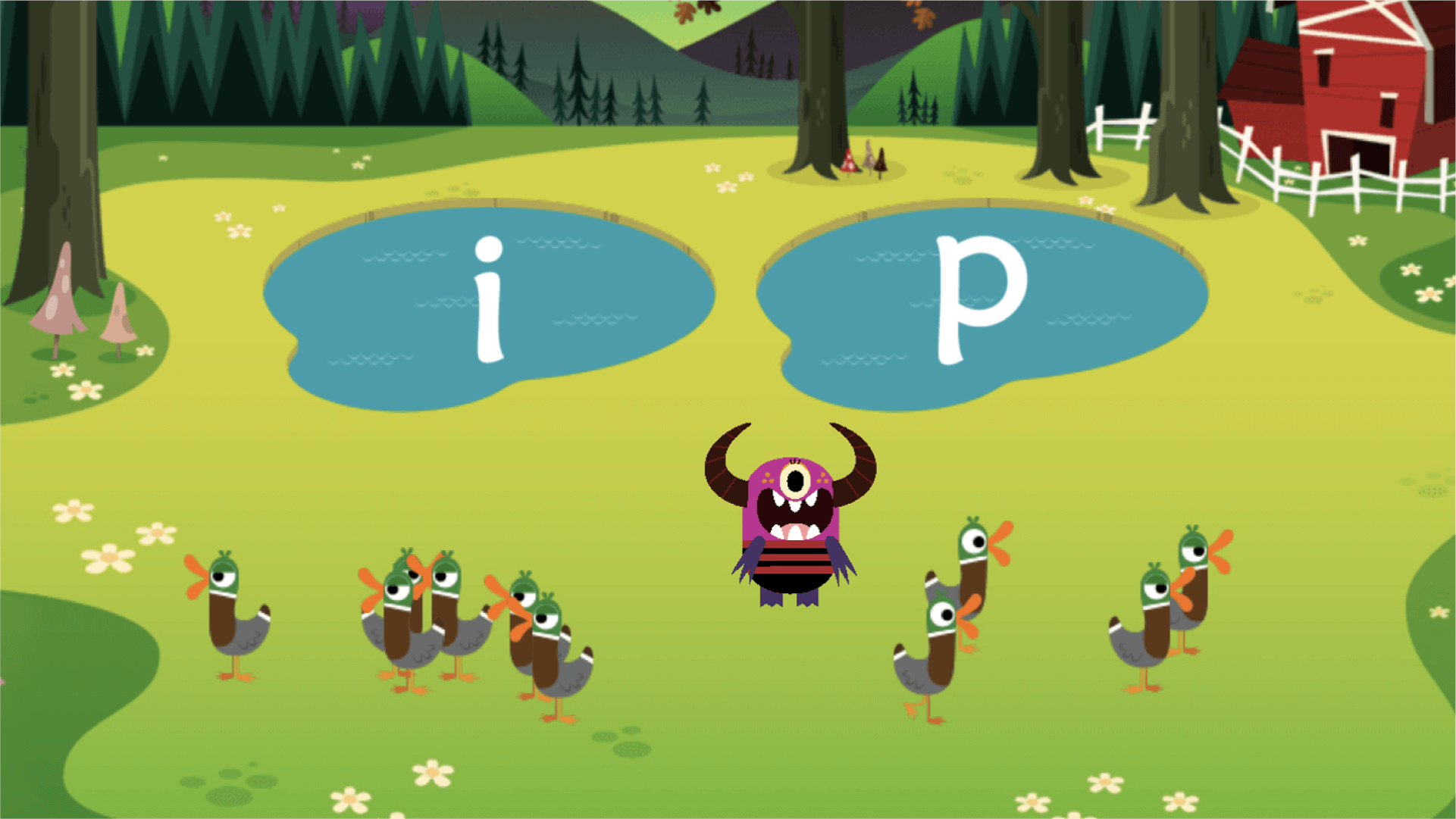
That's where Teach Your Monster To Read comes in! This game is specifically designed to make learning phonics fun and engaging for kids. With colourful monsters, exciting games, and a variety of levels that gradually increase in difficulty, children can progress at their own pace. This helps them feel a sense of accomplishment as they learn and not become overwhelmed. Additionally, the game is designed to be fun and engaging, so children are motivated to continue playing and learning!
The best part? Teach Your Monster To Read is completely FREE to play online! So, whether you're a parent, teacher, or homeschooler, you can easily incorporate this tool into your child's learning routine. Whatever device you have, Teach Your Monster To Read works on a variety of devices and platforms.
How else can you promote early literacy skills? Imaginative play, arts and crafts, and outdoor learning activities are all great ways to help children develop their creativity. It also helps with problem-solving skills, social-emotional development, language, and communication skills, which are vital for reading and writing.
That's why Teach Your Monster encourages you to explore a variety of tools and resources to help your child become a confident and successful reader. Whether it's playing with educational toys and games, engaging in outdoor activities, or simply reading together as a family, there are so many fun and effective ways to promote early literacy skills and overall development.
If you're looking for a way to help your child improve their reading skills and develop a love of learning, check out Teach Your Monster To Read. With the right tools and resources, you can help your child become a confident and successful reader while promoting their overall development and well-being.
Good luck, and happy learning!
From Teach Your Monster HQ
Teaching a child about money is an important responsibility as a parent and a teacher. It’s never too early to start teaching your child the value of money. Things like how to save and how to spend wisely are brilliant skills to have early on in life. By teaching them at a young age, you can help them develop good financial habits that will stay with them throughout their lives. As a parent, you might wonder why it's important to teach your child about money at such a young age. After all, they are just starting their journey in life, and there will be plenty of time to learn about finances later on, right? Wrong.
Studies have shown that children who learn about money management at a young age are more likely to make better financial decisions later in life. They are less likely to fall into debt or struggle financially as adults. By teaching your child about money early on, you are setting them up for financial success in the future.
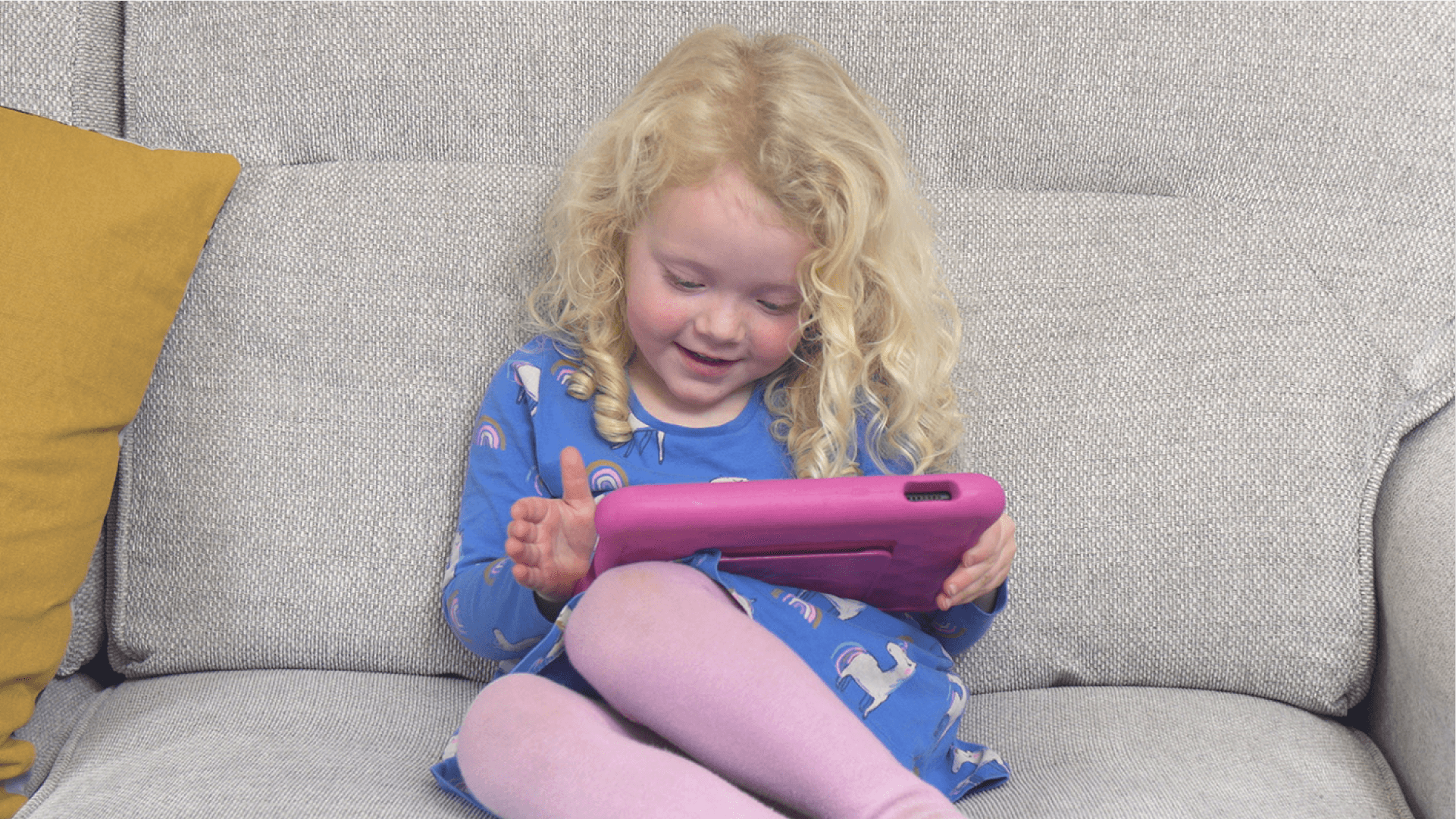
Let’s have a look at ways we can help children be more money savvy:
Play Money Games
Playing money games is a fun and interactive way to teach your child about the value of money. You can play games like “Grocery Store,” where your child can buy and sell items using play money. You can also create a “Piggy Bank” game to teach them the concept of saving. Encourage them to save their money and count it periodically to show them how their savings are growing. Remember to give them praise when they are adding the numbers correctly or, help them when they make a mistake.
Set Up a Savings Jar
Setting up a savings jar is an excellent way to teach your child the importance of saving money. Get a clear jar or container and label it “Savings” or maybe even their name so they can see how much they’ve managed to save! Encourage your child to put their spare change in the jar and watch it grow over time. You can also set a goal for the savings jar, such as saving for a toy they want or a family trip! Don’t have a jar at home? Then make your own together! Here are a few ideas for you to do together.
Play Shopkeeper
Playing shopkeeper is an excellent way to teach your child about money and math. Set up a pretend shop and price items, then have your child use play money to buy them. You can switch roles and have them be the shopkeeper, too. This imaginative play helps your child learn how to count money, make change, and understand the value of different coins and bills.
Allowance and Chores
Giving your child an allowance can be an effective way of teaching them about money management. Set up a weekly allowance and give them tasks to complete, such as cleaning their room or doing their homework. This activity teaches them the importance of hard work and earning money. Encourage them to save a portion of their allowance and spend the rest on things they want. Talk to them about what they may want to spend it on and how close they are to getting it!
There are also books that can help your kid start their money journey, check them out here. Did you know that our game, Teach Your Monster Number Skills, can also help? Building number confidence means they are able to recognise the numbers and help with counting, addition and subtraction.
Good luck, and happy learning!
From Teach Your Monster HQ
Did you know Teach Your Monster Reading for Fun is jam-packed with over 70 FREE books? Plus magazines and more from the Usborne range, as well as Okido, Otter-Barry and Teach Your Monster, too.
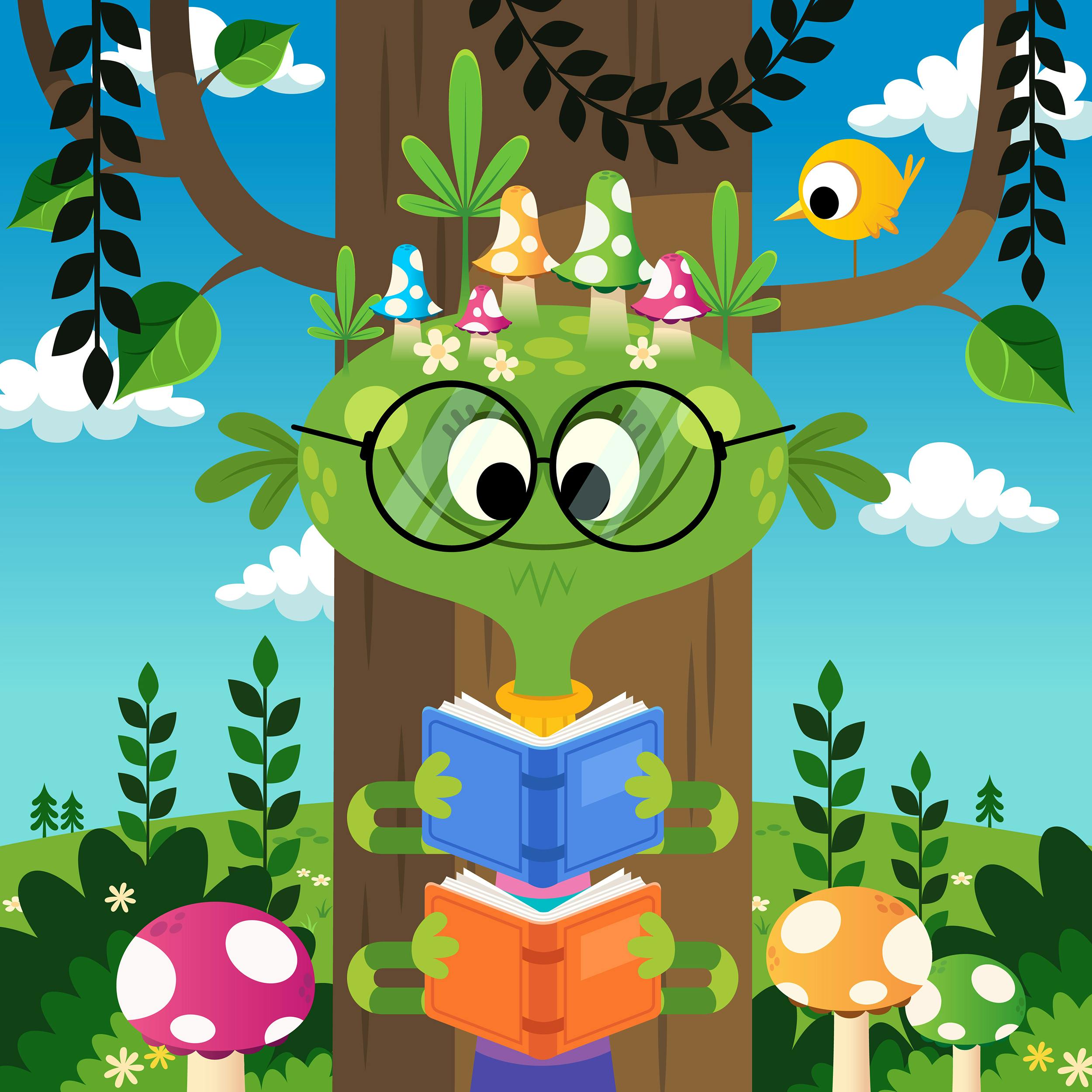
In Teach Your Monster: Reading For Fun, kids can earn books in return for completing tasks. Your child will love earning book rewards for completing a number of reading-focused tasks, activities and quests, such as following recipes, instructions, signposts and dialogue.
Every book collected can be added to a virtual bookshelf — available to pick up and read at any time! Below, we have included descriptions of some of the books on offer within the game.
Play Reading for Fun today: https://bit.ly/3p4Bbp4
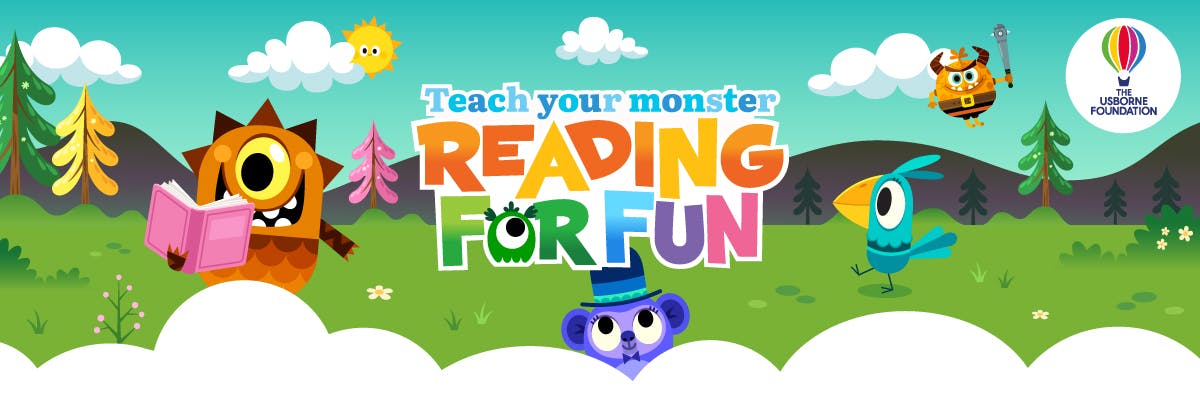
FREE BEDTIME STORY BOOKS
Badger’s Happy Feeling - A story about finding happiness within.
Dog and The Balloon - Dog wants someone to play with - but where can he find a friend?
Little Bear and the Clock - How can you make the clock go faster so that grandma will arrive? Little bear finds out the answer.
Little Lion’s Roar - Little lions can’t roar, but all his animal friends are determined to teach him. How can he learn to do it?
Little Rabbit and the World - Little Rabbit wants to explore the big wide world, but how can she climb high enough to see it?
Little Tiger and the Island - Little Tiger wants to go to the island, but he’s scared of swimming. How can he get there?
FREE BOOKS OF POEMS
Can You Do The Robot? - A poem encouraging children to mimic fun dance movements.
Dum-Diddy Dum - Children read and hum along to this musical poem.
Four Little Seeds - Follow the journeys of four little seeds in this read-out-loud poem.
Imagine if the World was just one Colour - What colour would you choose to paint the world? A poem about colours.
Jitterbug Ball - Join the mini-beasts dance their Jitterbug ball.
Monster Poems - Roger Stevens paints pictures of the village with words. Find out more about the characters who live there, places to go and strange and unusual events in this book of poems.
There’s a Whole World in my Park - A poem about the wonder of nature in the park.
FREE BOOKS ABOUT ARTS AND CRAFTS
Dinosaur Fun - Learn a range of methods for crafting dinosaurs.
How to Make a Star - Learn how to make a folded star out of paper.
I Can Cut and Stick - Use simple materials such as cardboard and old envelopes to cut and stick a truck, a caterpillar, an octopus puppet and lots more ideas.
I Can Draw Animals - Grab your crayons and follow these simple steps to draw a lion, a rabbit, a monkey and lots more animals.
Make Paper Plate Animal Masks - Learn how to make paper plate masks.
Make Your Own Plasticine - Learn how to make your own plasticine and mix colours together.
FREE EDUCATIONAL BOOKS
My First Dinosaur Book - The history of dinosaurs and their many names.
My First Cookbook - A range of recipes designed for children and adults to cook together.
Messy Monster Architecture - Messy, Zoe and Felix learn the best way to build a house.
Messy Monster Coding - Messy, Zoe and Felix find a secret message.
Messy Monster Mammals - Messy, Zoe and Felix learn what it’s like to be a mammal.
My First Book About Food - What is pasta? How is bread made? Where does milk come from? Find out in this book and have fun doing quizzes and puzzles.
My First Book About How Things Grow - How do peanuts grow? Where do seeds come from? Which flowers bloom in the spring? Find out in this book and have fun doing puzzles and quizzes.
The Sun and Moon Rendezvous - Find out what happens when the sun and moon try to meet
THOUGHT-PROVOKING FREE BOOKS
Immi - A beautiful, watercolour-illustrated story about friendship and change.
The Emperor’s New Clothes - The classic story with a moral, focusing on not allowing pride to stop us from speaking up when we know the truth.
FREE BOOKS THAT ENCOURAGE FOCUS AND OBSERVATION
Little Red Riding Hood - The classic tale of Little Red Riding Hood, with a little yellow duck to find on every page.
Night & Day - As the sun sets, many animals are going to sleep, but lots are just beginning to wake up. Go on a journey from dusk to dawn, to see some night-time animals. Then, say good morning to chirping birds and sunbathing lizards.
On the Beach - Beaches and the surrounding sea, from sandy, tropical shores, to those covered in snow and ice, are home to an incredible variety of plants and animals. Explore a rock pool brimming with creatures, find out about hunting penguins, and see how baby turtles hatch from eggs buried under the sand.
Ponds - Ponds are packed full of life. Discover the bugs, birds and other creatures that live in and around ponds, from dragonflies swooping around above the water, to beetles diving deep below.
Robot OK-1 - Observe differences between robots and humans and learn to tell them apart
Seasons - This book takes you on a journey through the seasons, looking at the changing wildlife and landscapes.
Which book has caught your eye? We’d love to hear your favourites, and do let us know if there are any books you’d like to see in the game!
Play Teach Your Monster Reading for Fun
You may have noticed that we have a new look!
A new website and a slightly different name
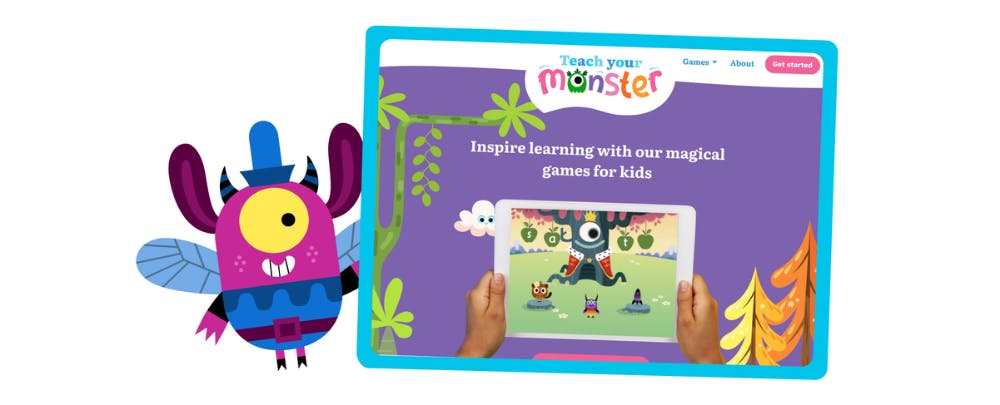
When we launched Teach Your Monster To Read over 8 years ago, we had a mission to improve the literacy of young children with a game that was both super-fun and designed to meet stringent standards by educational experts.
Now, over 2 million children per month play our games on our website and apps for iOS, Android and Amazon.
It’s been quite a journey!
And for 8 years, being known as “Teach Your Monster To Read” has suited us just fine.
Along came Reading for Fun and Number Skills!
While remaining true to our core mission as a non-profit charitable foundation, we want to make more games across different areas of learning.
Whether those games are focused on literacy, mathematics or other topics, we’ve built a wealth of experience and know-how to allow us to make magical, fun-filled games focusing on other areas of childrens’ education and well-being.
However, as we’ve launched new games - Teach Your Monster: Reading for Fun and Teach Your Monster: Number Skills - being known as “Teach Your Monster To Read” made less sense.
So welcome to the world, Teach Your Monster!
A slightly tweaked brand name and a beautiful new, more modern website that allows us to give you access to all of the games that we’ve made - and will make in the future.
Not much has changed really, we’re still the same people with the same passion for children's education - we just have more than one game for you to enjoy now.
Welcome to our new world!
Please take a look around and let us know what you think at [email protected]
Related Links
Designed by the creators of Teach Your Monster to Read in collaboration with educational experts from Roehampton University, Teach Your Monster: Reading for Fun gets children reading more, boosts their confidence and inspires a lifelong love of reading!
Your Monster is back again! This time there is a huge, magical new world to explore full of fascinating facts and amazing stories. Help the villagers with their jobs to earn over 70 incredible real-life books to put on your monster’s bookshelf. Some of these books will even help you bake cakes, find treasure and make the villagers laugh and giggle.
Trouble is never far away though. Your monster will need to use all its wisdom, skills and bravery to stop the book-eating goblin causing chaos in the village and eating all the books!
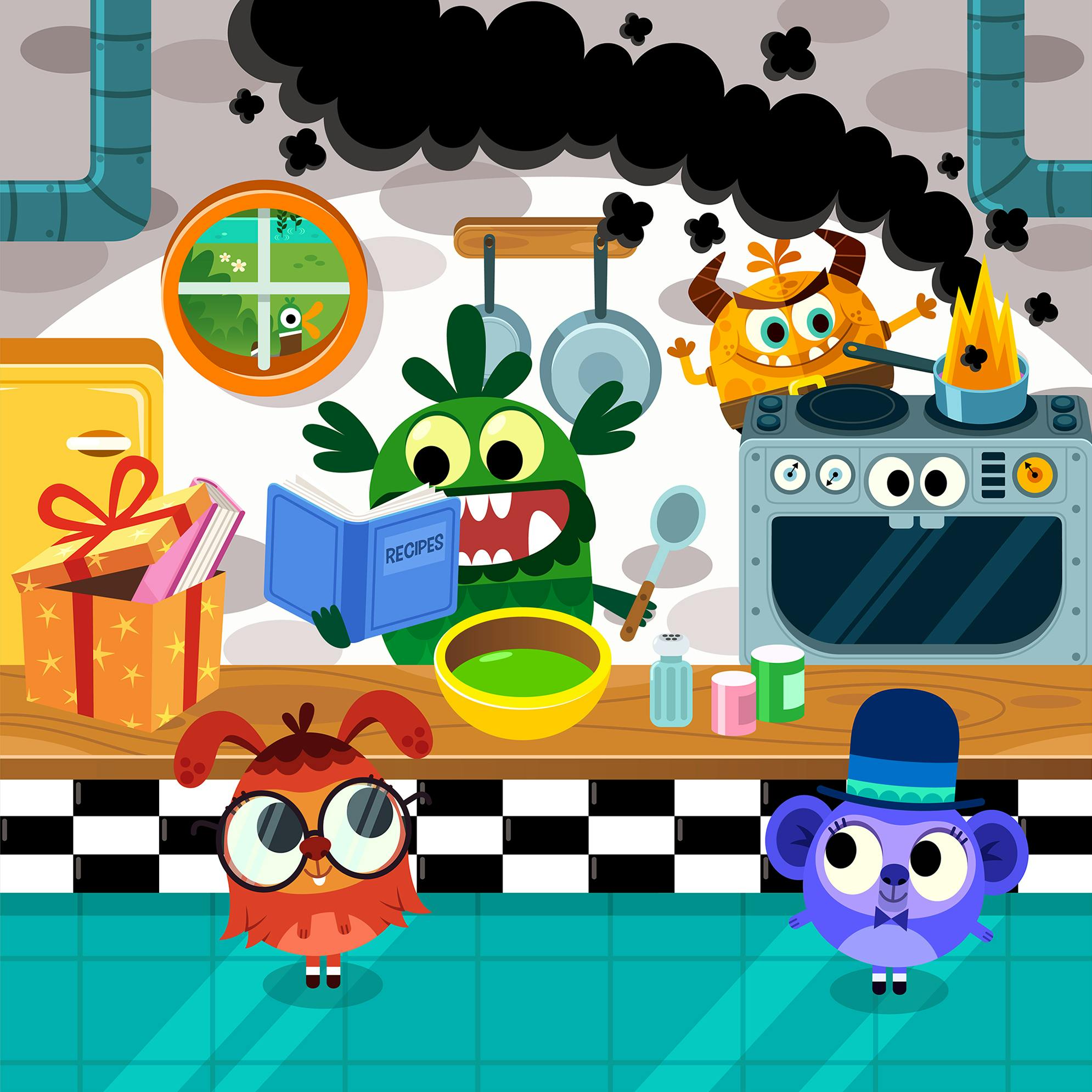
To hear when the app version goes live later this year, follow us on Facebook and Twitter.
PLUS: PLANS REVEALED FOR LAUNCH OF NEW GAME THIS YEAR!
Charitable organisation, The Usborne Foundation, announces that Teach Your Monster to Read, a series of three free online reading games to help young learners further develop their reading skills, has reached more than 20 million children worldwide and has been played 200 million times!
With children across the world learning at home due to Covid-19, and parents looking for additional resources to support home learning and encourage children to read during the lockdown, Teach Your Monster to Read has attracted record levels of users since the outbreak.
Peter Usborne MBE, who established The Usborne Foundation, and is founder of world-renowned Usborne Publishing, said, “Since its launch in 2012, our Teach Your Monster to Read series of games have proved incredibly popular with children, parents and schools; helping young learners to further develop their reading skills. Today the game has reached a staggering 20 million children worldwide, and has over 200 million plays; an incredible milestone for our team to celebrate.

Peter Usborne MBE with his daughter, Nicola Usborne (MD of Usborne Publishing)
Digital resources that support home-learning play an important role in a child’s education, and Teach Your Monster To Read is a fun and exciting way for children at different reading levels to learn, whilst also helping parents and schools during these unprecedented times; it is a very successful formula. The significant uplift in users during the pandemic shows our love for reading is stronger than ever.”
The game series currently includes Teach Your Monster to Read: First Steps; Teach Your Monster to Read: Fun with Words; and Teach Your Monster to Read 3: Champion Reader.
A ground-breaking new game, Teach Monster: Reading for Fun is currently being worked on by the team.
A brand new game (currently in development) will enable children to meet wonderful new characters, explore a brand new magical world, and earn entire books that they can read anytime and keep on their monster’s bookshelf. Every child will have the chance to create their own free library with more than 50 books available to collect, read, and listen to. The goal is to ignite a lifelong love of reading and make books accessible to every child.
Play in a world of reading and books
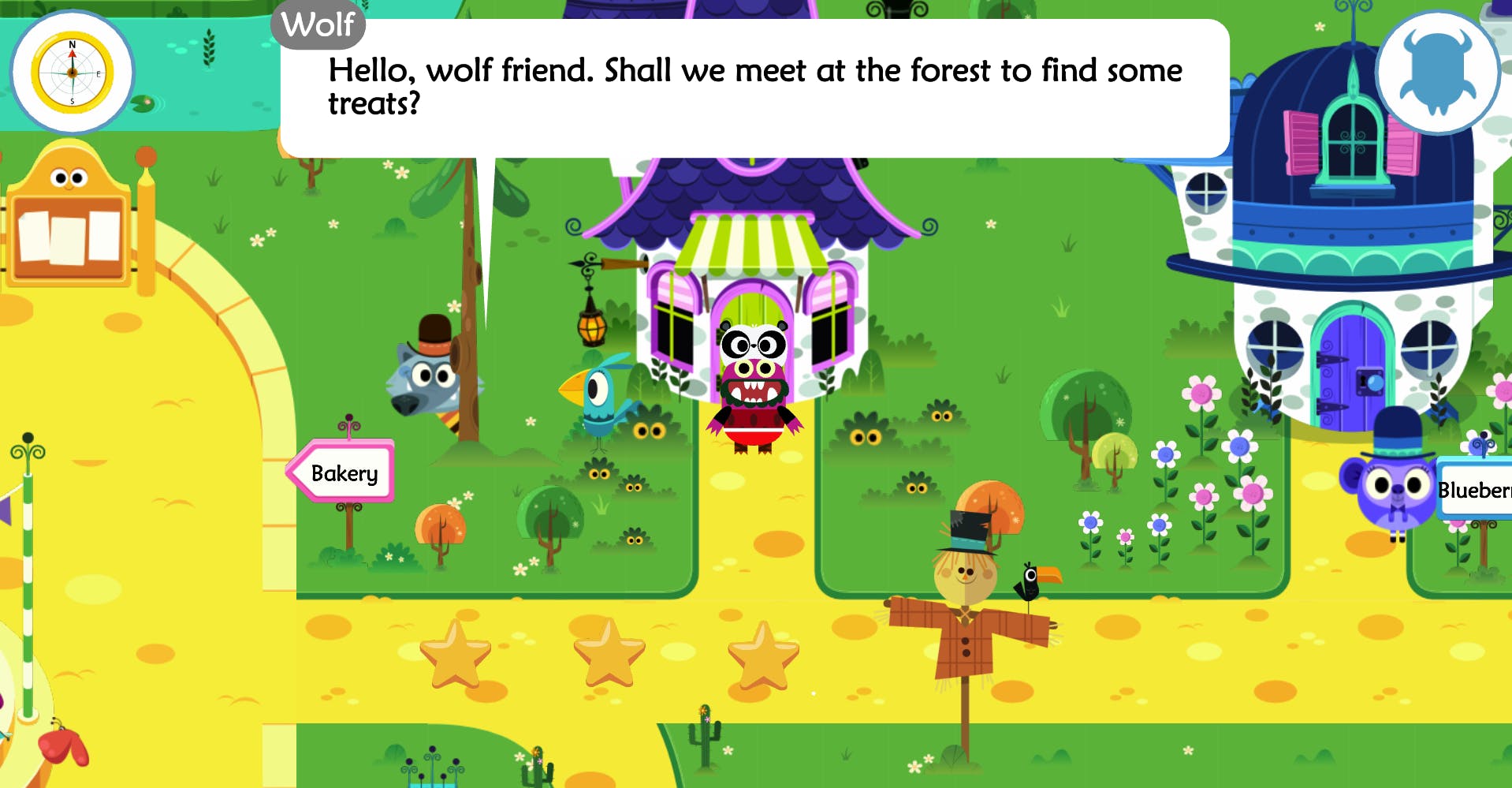
Visit Goldspear in the village library and browse the bookshelves for your next book
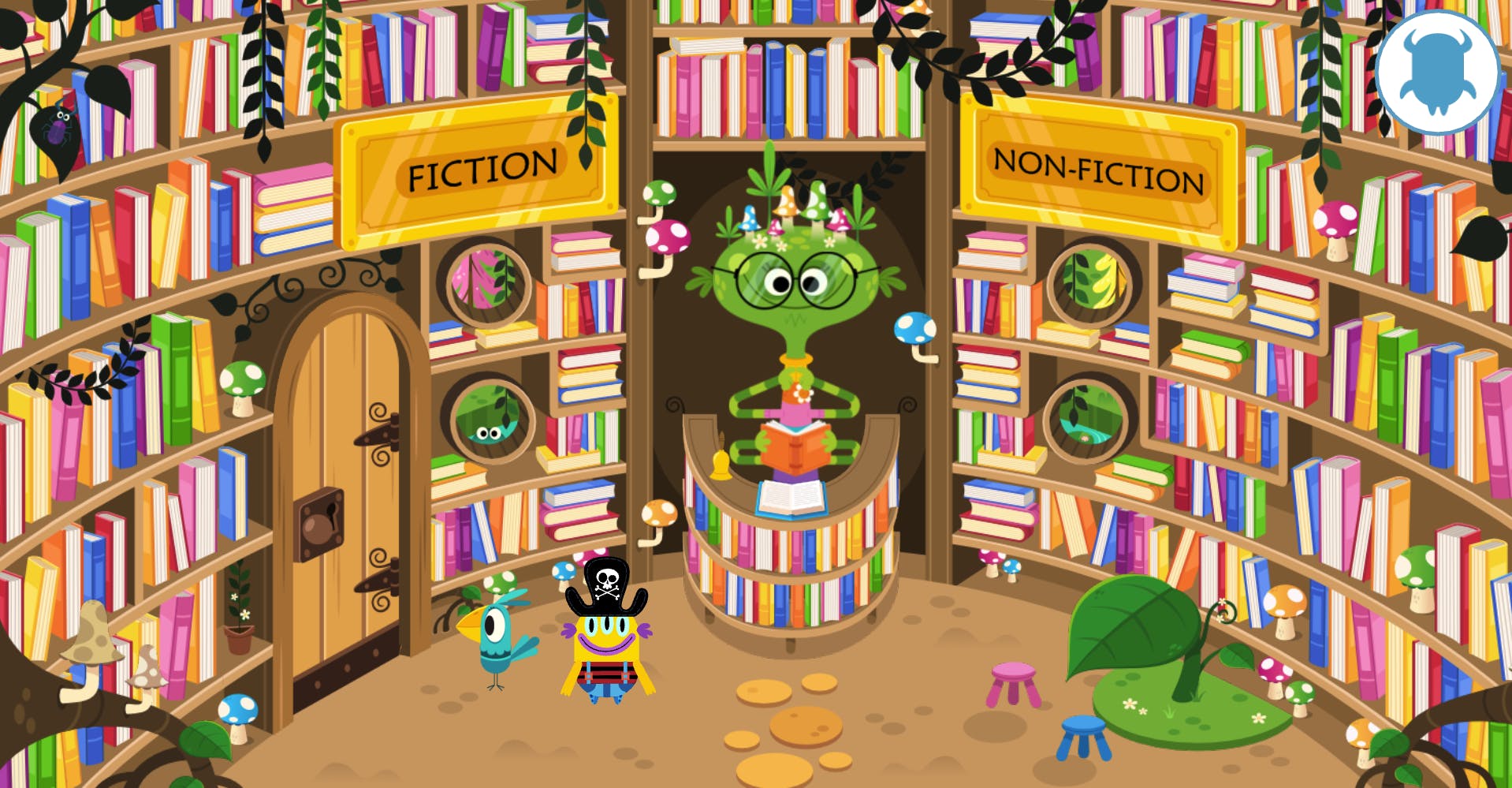
Collect books for your monster's bookshelf. Read along with villagers and help them solve mysteries
